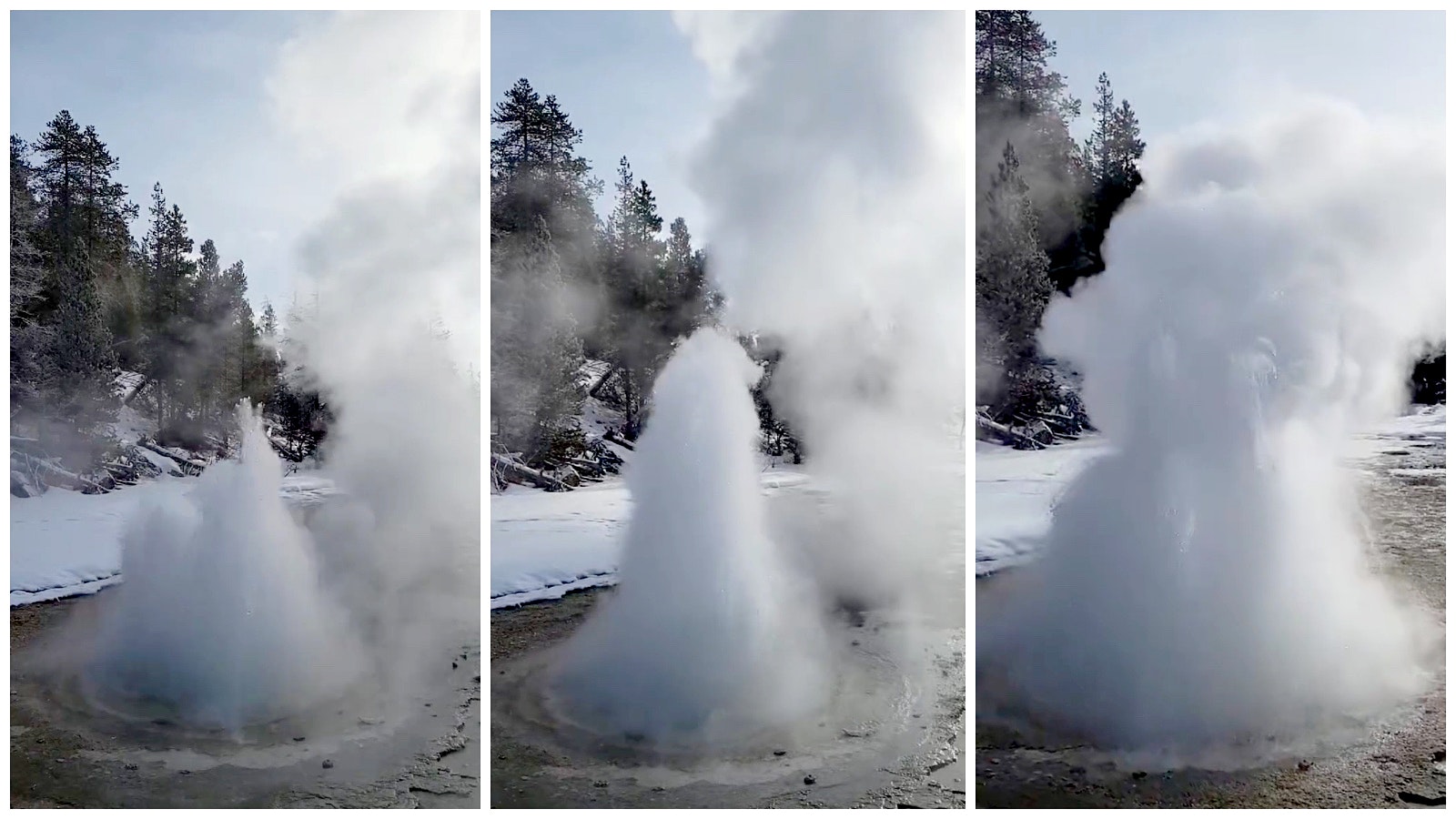Graham Meech spent most of Jan. 7 watching one thermal feature in Yellowstone National Park, captivated by the multiple eruptions of Economic Geyser, which was blasting off for the first time a quarter century.
Economic Geyser’s first eruption of the day was reported around 7:56 a.m. by Meech, who stayed the entire day marking each of the dozens of times the geyser acted up.
Meech witnessed 48 eruptions that Sunday, each one between 5 and 20 minutes apart. Most were “minor eruptions” with some bubbling and steam but not much else, while others were “major” eruptions sending water 20 feet into the air and onto the nearby boardwalk.
By 2 p.m., Economic Geyser activity had slowed down, and it stopped altogether when the nearby Grand Geyser, the tallest predictable geyser in the world, had one of its regular eruptions.
Mike Poland, scientist in charge of the Yellowstone Volcano Observatory, said this was the first sign of life from Economic Geyser in almost 25 years.
“It’s fun (but) not particularly unusual,” he said of the pattern of geysers laying dormant for years, then erupting multiple times. “Yellowstone geysers do this all the time. Giantess (Geyser) erupted a few times a year for decades, then over the past 23 years only erupted four times.”
Meech witnessed the first recorded eruption of this once highly active geyser since 1999.
Economic History
Economic Geyser is one of the many geysers in the Upper Geyser Basin in Yellowstone National Park, in the same area as Old Faithful. In the park's early days, Economic Geyser was a “crowd-pleasing” thermal feature because of its frequent water eruptions of up to 25 feet every few minutes.
At the same time the world experienced a historic economic crash, Economic Geyser went dormant in the 1920s. The Great Depression resulted from the sudden economic downturn. And while the global economy recovered, Economic Geyser has stayed mostly dormant since the 1920s.
“The last real spate of eruptions was in 1975,” Poland said. “There were isolated eruptions observed in 1997 and 1999, then nothing until last week.”
Even if the Economic prognosis looks stagnant most days, there could always be a rally right around the corner. But Yellowstone’s geyser activity is now more in a bear market than a bull market, and Economic Geyser tends to avoid risky behavior.
Economic Futures
Meech was extremely fortunate to witness the first recorded eruption of Economic Geyser since 1999. Other Yellowstone visitors hoping for Economic prosperity will probably be disappointed.
Poland knows better than to predict anything in Yellowstone. However, Economic’s history suggests the Jan. 7 eruption will be its only one for a long time.
“The pattern of the past 100 years would suggest not,” he said. “Over that time, it would play for a little bit, maybe a few days, and go back to sleep for a while. Perhaps for decades. It hasn't erupted since Jan. 11, so maybe it's already back to sleep.”
Many thermal features in Yellowstone share the same underground plumbing systems, which feed water into the various geysers, pools and other thermal features. That explains why Economic Geyser stopped erupting shortly before the much larger Grand Geyser erupted, which usually sends water 200 feet high for up to 12 minutes.
Economic recovery is always possible, but it could take longer than most people are willing to wait. For Poland, Meech, and other geyser enthusiasts, that’s just the nature of the Yellowstone market.
“Economic's activity is a great example of what Yellowstone's geysers do,” Poland said. “(They) turn on and off in ways that are impossible to forecast.”
Andrew Rossi can be reached at arossi@cowboystatedaily.com.





